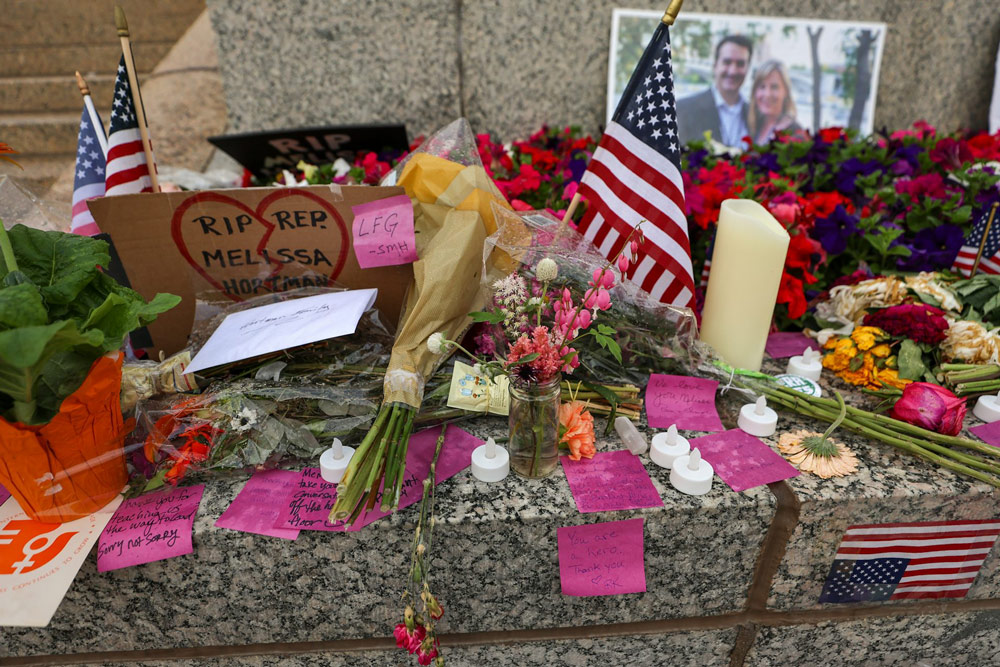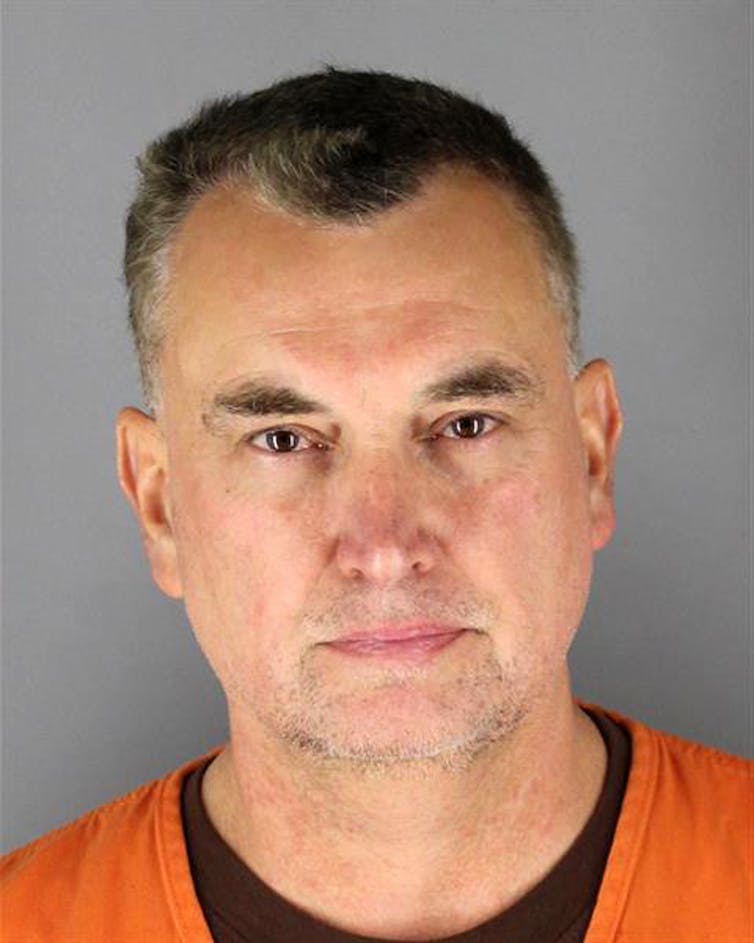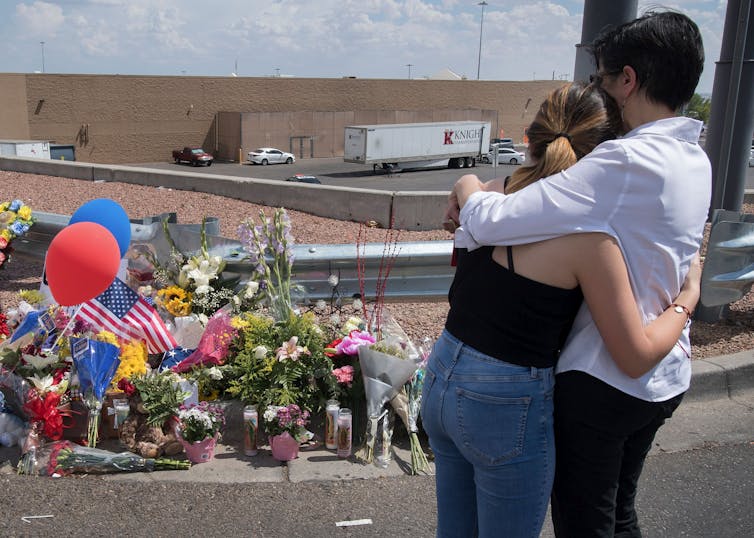
By Alex Hinton
After a two-day manhunt, Minnesota authorities arrested and charged 57-year-old Vance Boelter on June 15, 2025, after he allegedly shot and killed Minnesota House Democratic leader Melissa Hortman and her husband in their home and seriously injured another state senator and his wife.
Boelter, disguised as a police officer, went to other Minnesota politicians’ homes late in the evening on June 13. In his parked car he left behind a list of names and addresses of other Minnesota state and federal elected officials, as well as community leaders and Planned Parenthood locations.
This incident is the latest to demonstrate how political and often hate-based violence is becoming a more common part of American politics.
“Let me be absolutely clear: this was an act of targeted political violence, and it was an attack on everything we stand for as a democracy,” U.S. Sen. Amy Klobuchar of Minnesota said in a June 14 statement.
The threat of domestic violence and terrorism is high in the United States – especially the danger posed by white power extremists, many of whom believe white people are being “replaced” by people of color.
I am a scholar of political violence and extremism and wrote about these beliefs in a 2021 book, “It Can Happen Here: White Power and the Rising Threat of Genocide in the US.” I think it’s important to understand the lessons that can be learned from events such as the recent Minnesota shootings.
After decades of research on numerous attacks that have left scores dead, we have learned that extremists are almost always part of a pack, not lone wolves. But the myth of the lone wolf shooter remains tenacious, reappearing in media coverage after almost every mass shooting or act of far-right extremist violence. Because this myth misdirects people from the actual causes of extremist violence, it impedes society’s ability to prevent attacks.

Hennepin County Sheriff’s Office via Getty Images
The lone wolf extremist myth is dangerous
FBI Director Christopher Wray said in August 2022 that the nation’s top threat comes from far-right extremist “lone actors” – who, he explained, work alone, instead of “as part of a large group.”
Wray is wrong, and the myth of the lone wolf extremist – the mistaken idea that violent extremists largely act alone – continues to directly inform research, law enforcement and the popular imagination.
I think that Wray’s focus on extremism is much needed and long overdue. However, his line of thinking is dangerous and misleading. By focusing on individuals or small groups, it overlooks broader networks and long-term dangers and so can impede efforts to combat far-right extremist violence – which Wray has singled out as the country’s most lethal domestic threat.
Not a new trend
Far-right extremists may physically carry out an attack alone or as part of a small group of people, but they are almost always networked and identify with larger groups and causes.
This was true long before the social media age. Take Timothy McVeigh. He is often depicted as the archetypal lone wolf madman who blew up the Oklahoma City Federal Building in 1995.
In fact, McVeigh was part of a pack. He had accomplices and was connected across the far-right extremist landscape.
The same is true of Payton Gendron, who shot and killed 10 Black people at a Buffalo, New York, grocery store in 2022, and Patrick Crusius, who killed 23 people in a racist attack targeting Latino shoppers at a Walmart in Texas in 2019.
These two shooters were also characterized in media coverage as lone wolves following their deadly attacks.
“He talked about how he didn’t like school because he didn’t have friends. He would say he was lonely,” a classmate of Gendron said shortly after Gendron carried out the mass shooting.
Both were active on far-right extremist social media platforms and posted manifestos before their attacks. Gendron’s manifesto discusses how he was radicalized on the dark web and inspired to attack after watching videos of Brenton Tarrant’s 2019 massacre of 51 people at two mosques in Christchurch, New Zealand.
Almost a quarter of Gendron’s manifesto is directly taken from Tarrant’s, which was titled “The Great Replacement.” This fear of white replacement, centered around perceived white demographic decline, was also a motive for Crusius. His manifesto pays homage to Tarrant, before explaining his attack was “a response to the Hispanic invasion of Texas.”
The lone wolf myth also suggests that extremists are abnormal deviants with anti-social personalities.
After Gendron’s rampage, for example, New York Attorney General Letitia James called him a “sick, demented individual.” Crusius, in turn, was described by the White House and news articles as “evil,” “psychotic” and an “anti-social loner.”
The vast majority of far-right extremists are, in fact, otherwise ordinary men and women. They live in rural areas, suburbs and cities. They are students and working professionals. And they believe their extremist cause is justified. This point was illustrated by the spectrum of participants in the Jan. 6, 2021, Capitol insurrection.
Boelter is a father of five who has worked various jobs in the food industry and with funeral service companies and a security service. While Boelter’s exact motivation and political affiliation are not clear, friends describe him as very religious and conservative. Boelter reportedly told a roommate and friend that he strongly opposes abortion. He has also criticized gay and transgender people during sermons he delivered at a church in the Democratic Republic of Congo.

Mark Ralston/AFP via Getty Images
Tracing the lone wolf mythology
How did the lone-wolf metaphor come to misinform the public’s view of extremists, and why is it so tenacious?
Part of the answer is linked to white supremacist Louis Beam, who wrote the essay “Leaderless Resistance” in 1983. In it, he called for far-right extremists to act individually or in small groups that couldn’t be traced up a chain of command. According to his lawyer, McVeigh was one of those influenced by Beam’s call.
After Beam formulated this idea, both far-right extremists and law enforcement increasingly used the lone wolf term. In 1998, the FBI even mounted an “Operation Lone Wolf” to investigate a West Coast white supremacist cell.
The 9/11 terrorist attacks further turned U.S. attention to Islamic militant “lone wolves.” A decade later, the term became mainstream.
And so it was not a surprise when, after the Buffalo shooting, New York State Senator James Sanders said, “Although this is probably a lone-wolf incident, this is not the first mass shooting we have seen, and sadly it will not be the last.”
The tenacity of the lone wolf myth has several sources. It’s convenient – evocative and powerful enough to draw and keep people’s attention.
By using this term, which individualizes extremism, law enforcement officials may also depoliticize their work. Instead of focusing on movements like white nationalism that have sympathizers in the various levels of government, from sheriffs to senators, they focus on individuals.
The lone wolf extremist myth diverts from what should be the focus of deterrence efforts: understanding how far-right extremists network, organize and, as the Jan. 6 insurrection showed, build coalitions across diverse groups, especially through the use of social media.
Such understanding provides a basis for developing long-term strategies to prevent extremists like Boelter from carrying out more violent attacks.
![]()
Alex Hinton is Distinguished Professor of Anthropology and Director of the Center for the Study of Genocide and Human Rights at Rutgers University, Newark.




























Laurel says
Interesting. I knew there were small groups, but did not know that these “lone wolf individuals” were a part of these groups.
Look, I do get where some of these people are coming from. When you hear “people of color” that means EVERYONE except white people. Apparently, we are of no color. Personally, I’m pink and yellow with lots of little, brown spots. Seems like a lot of color to me. So, if everyone is a person of color, then white people seem like the smallest group. Something they are not used to being. They see that there are some 30 “black” channels on TV, such as BET channels, but there can be no WET. That would be wrong, right? So, they feel they are being swallowed up.
We have dark skinned people in our family. When I asked “what’s the difference between “people of color” and colored people,” I was told it’s more polite to say people of color. Wha? Anyway, these “people of color” are just people. They are smart, funny, clever, kind, caring and bighearted. I am glad they are part of my family. It’s just skin. It’s what’s inside that counts.
People love to categorize colors, sizes, types, etc., but all that does is leave us out of possible, great friendships. Blondes are dumb. Brown people are murderous. Gays are after your kids. Trans are confused. It goes on and on and on, unfortunately. I think the majority of Americans are comfortable with themselves, and are not intimidated with differences. We’re all just people.
Let’s all calm down and just be people.
Pogo says
@Professor Hinton (and FlaglerLive)
“Extremists Like the Minnesota Shooter Are Not Lone Wolves…”
100%
Best thing I’ve read, from The Conversation site, in a very long while. Thank you.
Atwp says
This group of people are devilish bad. Always trying to hurt other people. They did demonic things so long and got away with it they think it is right and normal. They will continue. This country uphold the wrong doing of these people and ignore the rights of the victims. Am sure there is a good chance he will get pardoned by Trump. Look at the color of his skin.
My thoughts says
Their all mentally ill. The Republican Maga party needs to stop promoting violence and think it is acceptable. Their words matter.
The Geode says
Mass shootings goes on all the time in the “Black Community”all the time, but the “mass media” (and this one) like to ignore it or pretend it’s not happening. You can almost tell the race of a shooter by the coverage it gets. In the meantime, its “status quo” on the other side of the tracks.